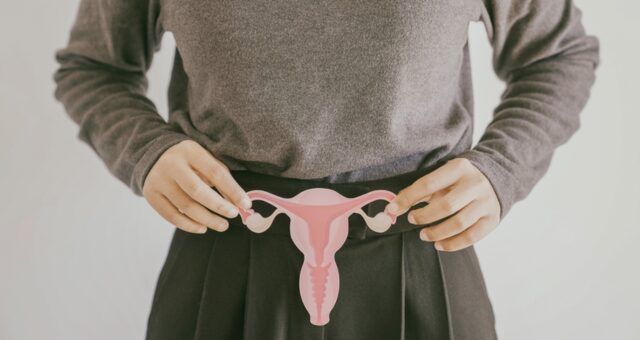Medically Reviewed by Lucas Rosa, PhD in Molecular Biology
Hormones are all about balance – and when one hormone takes the lead for too long, it can throw your entire system off. One of the most common hormonal imbalances today is estrogen dominance. It’s a condition where estrogen levels are too high relative to other hormones, especially progesterone.
Estrogen itself isn’t the villain – it’s an essential hormone that plays a major role in sexual health, bone strength, mood regulation, and much more. But when it dominates, trouble begins.
This blog will break down exactly what estrogen dominance is, what causes it, how it affects your health, and most importantly – how to bring it back into balance naturally.
What Is Estrogen Dominance?
Estrogen dominance refers to a hormonal imbalance where there is too much estrogen in the body relative to progesterone. This can happen either because your body is producing too much estrogen, or not producing enough progesterone to balance it out. (1)
It’s more common in those assigned female at birth, particularly during perimenopause and menopause, but it can also affect males. Estrogen Dominance doesn’t always mean your estrogen is high in lab tests – it may still be within the normal range, but the ratio between estrogen and progesterone is off.
Symptoms of Estrogen Dominance
Estrogen Dominance can lead to a wide range of physical and emotional symptoms:
In those assigned Female at birth:
- Irregular or heavy periods
- Bloating
- Weight gain, especially around the hips and abdomen
- Breast tenderness
- PMS and mood swings
- Headaches or migraines
- Fatigue
- Low libido
- Anxiety or depression
- Trouble sleeping
In those assigned Male at birth:
- Increased belly fat
- Low libido
- Erectile dysfunction
- Gynecomastia (breast tissue growth)
- Mood swings
- Fatigue and brain fog
These symptoms can vary in severity and are often brushed off or misdiagnosed, especially in those assigned female at birth.

What Causes Estrogen Dominance?
Estrogen Dominance doesn’t just happen on its own – it usually results from a combination of internal and external factors:
1. Chronic Stress
Chronic stress increases cortisol, which can interfere with progesterone production. Over time, this tilts the balance in favor of estrogen.
2. Poor Liver Function
Your liver helps break down and remove excess estrogen. When the liver is sluggish due to poor diet, alcohol, or toxin exposure, estrogen builds up.
3. Exposure to Xenoestrogens
Xenoestrogens are synthetic endocrine-disrupting chemicals that mimic estrogen in the body. They can be found in:
- Plastics (like BPA)
- Non-organic produce (pesticides)
- Personal care products with parabens and phthalates
- Household cleaners (especially ones with triclosan)
4. Hormonal Birth Control
Certain birth control methods, especially estrogen-based pills, can elevate estrogen over time and suppress natural progesterone production.
5. Obesity
Fat tissue can produce and store estrogen, so excess body fat contributes to higher circulating estrogen levels.
6. Low Progesterone
Even if your estrogen is normal, low levels of progesterone can create an imbalance. This often happens in those assigned female at birth during perimenopause or from chronic stress and poor sleep.
Health Effects of Estrogen Dominance
Long-term estrogen dominance isn’t just uncomfortable – it can also lead to serious health issues if left unaddressed. Some of the conditions associated with it include:
- Polycystic Ovary Syndrome (PCOS)
- Fibroids
- Endometriosis
- Thyroid dysfunction
- Infertility
- Insulin resistance
- Increased risk of certain cancers, particularly breast and endometrial cancer
For those assigned male at birth, elevated estrogen can contribute to testosterone suppression, infertility, and increased risk of prostate problems.

Natural Ways to Balance Estrogen Dominance
The good news? Estrogen Dominance is reversible – and in most cases, without medication. Making targeted changes to your lifestyle can naturally restore hormonal balance.
Support Liver Detoxification
Your liver is your main detox organ. Studies have shown that detoxifying the liver helps the body clear excess estrogen. (2) Liver detoxification can be done by:
- Eating cruciferous vegetables like broccoli, cauliflower, kale, and brussels sprouts (rich in compounds that help regulate estrogen metabolism)
- Drinking plenty of water
- Reducing alcohol
- Adding liver-supporting herbs like milk thistle, dandelion root, and turmeric
Eat a Fiber-Rich Diet
Fiber binds to estrogen in the digestive tract to help eliminate it. (3) Aim for at least 25–35 grams of fiber daily from sources such as flaxseeds, chia seeds, oats, legumes, and vegetables.
Limit Xenoestrogen Exposure
Cut down your exposure to fake estrogens by:
- Avoiding plastic containers, especially for food and drinks
- Choosing natural, non-toxic skincare and cleaning products
- Eating organic when possible to avoid pesticides
- Filtering your tap water (many water sources have trace amounts of hormones)
Balance Blood Sugar
Insulin resistance is closely tied to estrogen dominance. (4) Keep your blood sugar stable by:
- Reducing processed sugar and refined carbs
- Eating balanced meals with protein, fat, and fiber
- Avoiding frequent snacking or skipping meals
Get Regular Exercise
Regular exercise improves circulation, reduces stress, helps detoxification, and supports weight management.
- Strength training supports lean muscle and hormone balance
- Aerobic activities like walking, swimming, or dancing improve metabolism

Sleep and Stress Management
Poor sleep and chronic stress can lower progesterone and drive estrogen up. Try:
- Going to bed at the same time each night
- Avoiding screens before bed
- Practicing mindfulness, meditation, or gentle yoga
Support Gut Health
Your gut plays a key role in recycling estrogen. A sluggish or imbalanced gut (dysbiosis) can allow excess estrogen to be reabsorbed. (5)
- Include fermented foods like kimchi, sauerkraut, or yogurt
- Consider a probiotic supplement
- Avoid long-term use of antibiotics unless medically necessary
Conclusion
Estrogen dominance is becoming increasingly common due to modern lifestyle factors – chronic stress, environmental toxins, poor diet, and lack of sleep all contribute to this hormonal imbalance. But the empowering truth is this: it’s not permanent, and you don’t need expensive medications or complicated protocols to start seeing a change.
By making consistent, supportive lifestyle changes – like eating whole foods, managing stress, avoiding xenoestrogens, and taking care of your gut and liver – you can help your body naturally rebalance itself.
While it may take time, small shifts in your daily habits can lead to noticeable improvements in your energy, mood, menstrual cycle, weight, and overall sense of well-being.
Remember, your hormones are always responding to your lifestyle. So if you suspect you’re dealing with estrogen dominance, don’t ignore the signs. Your body is communicating with you.
References
- Patel S, Homaei A, Raju AB, Meher BR. Estrogen: The necessary evil for human health, and ways to tame it. Biomed Pharmacother. 2018 Jun;102:403-411. doi: 10.1016/j.biopha.2018.03.078. Epub 2018 Mar 22. PMID: 29573619. https://pubmed.ncbi.nlm.nih.gov/29573619/.
- Kasarinaite A, Sinton M, Saunders PTK, Hay DC. The Influence of Sex Hormones in Liver Function and Disease. Cells. 2023 Jun 11;12(12):1604. doi: 10.3390/cells12121604. PMID: 37371074; PMCID: PMC10296738. https://pmc.ncbi.nlm.nih.gov/articles/PMC10296738/.
- Gaskins AJ, Mumford SL, Zhang C, Wactawski-Wende J, Hovey KM, Whitcomb BW, Howards PP, Perkins NJ, Yeung E, Schisterman EF; BioCycle Study Group. Effect of daily fiber intake on reproductive function: the BioCycle Study. Am J Clin Nutr. 2009 Oct;90(4):1061-9. doi: 10.3945/ajcn.2009.27990. Epub 2009 Aug 19. PMID: 19692496; PMCID: PMC2744625. https://pmc.ncbi.nlm.nih.gov/articles/PMC2744625/.
- Zhang Y, Howard BV, Cowan LD, Yeh J, Schaefer CF, Wild RA, Wang W, Lee ET. The effect of estrogen use on levels of glucose and insulin and the risk of type 2 diabetes in american Indian postmenopausal women : the strong heart study. Diabetes Care. 2002 Mar;25(3):500-4. doi: 10.2337/diacare.25.3.500. PMID: 11874937. https://pubmed.ncbi.nlm.nih.gov/11874937/.
- Atoum M, Padma K. Gut microbiota-estrogen axis: Its influence on female health outcomes – A narrative review. Acta Biomed. 2025;96(1):15980. doi:10.23750/abm.v96i1.15980
Check Out
HF Swaps
Better products for better hormone health.









